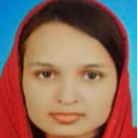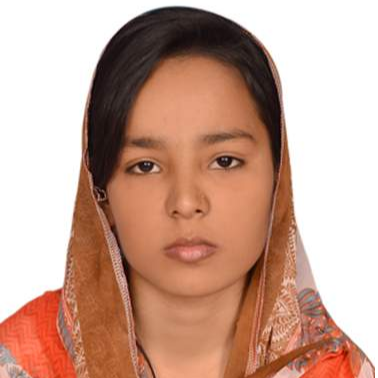International Journal of Information Technology and Computer Science (IJITCS)
IJITCS Vol. 11, No. 6, 8 Jun. 2019
Cover page and Table of Contents: PDF (size: 898KB)
Off-line Sindhi Handwritten Character Identification
Full Text (PDF, 898KB), PP.9-17
Views: 0 Downloads: 0
Author(s)
Index Terms
Off-line Handwritten, Neural Network training, Back Propagation (BP) algorithm, Sindhi Character identification
Abstract
Handwritten Identification is an ability of the computer to receive and translate the intelligible handwritten text into machine-editable text. It is classified into two types based on the way input is given namely: off-line and online. In Off-line handwritten recognition, the input is given in the form of the image while in online input is entered on a touch screen device. The research on off-line and online handwritten Sindhi character identification is on its very initial stage in comparison to other languages. Sindhi is one of the subcontinent's oldest languages with extensive literature and rich culture. Therefore, this paper aims to identify off-line Sindhi handwritten characters. In the proposed work, major steps involve in characters identification are training and testing of the system. Training is performed using a feed-forward neural network based on the efficient accelerative technique, the Back Propagation (BP) learning algorithm with momentum term and adaptive learning rate. The dataset of 304 Sindhi handwritten characters is collected from 16 different Sindhi writers, each with 19 characters. The novelty of proposed work is the comparison of the recognition rate for the single character, two characters and three characters at a time. Results showed that the recognition rate achieved for a single character is more than the recognition rate of multiple characters at a time.
Cite This Paper
Arsha Kumari, Din Muhammad Sangrasi, Sania Bhatti, Bhawani Shankar Chowdhry, Sapna Kumari, "Off-line Sindhi Handwritten Character Identification", International Journal of Information Technology and Computer Science(IJITCS), Vol.11, No.6, pp.9-17, 2019. DOI:10.5815/ijitcs.2019.06.02
Reference
[1]J. Pradeep, E. Srinivasan, and S. Himavathi, “Diagonal Feature Extraction Based Handwritten Character System Using Neural Network,” Int. J. Comput. Appl., vol. 8, no. 9, pp. 17–22, 2010.
[2]A. A. Sanjrani, J. Baber, M. Bakhtyar, W. Noor, and M. Khalid, “Handwritten Optical Character Recognition system for Sindhi numerals,” 2016 Int. Conf. Comput. Electron. Electr. Eng. ICE Cube 2016 - Proc., pp. 262–267, 2016.
[3]A. A. CHANDIO, M. LEGHARI, D. HAKRO, S. A. AWAN, and A. H. JALBANI, “A Novel Approach for Online Sindhi Handwritten Word Recognition using Neural Network,” Sindh Univ. Res. J. (Science Ser., vol. 48, no. 1, pp. 213–216, 2016.
[4]A. Yuan, G. Bai, P. Yang, Y. Guo, and X. Zhao, “Handwritten English Word Recognition based on Convolutional Neural Networks,” pp. 207–212, 2012.
[5]R. Dai, C. Liu, and B. Xiao, “Chinese character recognition: History, status and prospects,” Front. Comput. Sci. China, vol. 1, no. 2, pp. 126–136, 2007.
[6]A. El-Sawy and M. Loey, “Arabic Handwritten Characters Recognition using Convolutional Neural Network,” WSEAS Trans. Comput. Res., vol. 5, no. January, pp. 11–19, 2017.
[7]N. A. Memon, F. Abbasi, and S. Zardari, “Glyph Identification and Character Recognition for Sindhi OCR,” Mehran Univ. Res. J. Eng. Technol., vol. 36, no. 4, pp. 933–940, 2017.
[8]N. Nizamani, B. S. Chowdhry, M. Shaikh, and A. S. Saand, “Comparing Thinning Based Morphological operation on Sindhi,” IJCSNS Int. J. Comput. Sci. Netw. Secur., vol. 18, no. 2, pp. 126–129, 2018.
[9]A. M. Nizamani and P. N. U. H. Janjua, “Isolated Handwritten Character Recognition in Sindhi Language using Artificial Neural Network,” vol. 10, no. 1, pp. 17–23, 2012.
[10]W. A. Narejo and J. A. Mahar, “Morphology: Sindhi morphological analysis for natural language processing applications,” 2016 Int. Conf. Comput. Electron. Electr. Eng. ICE Cube 2016 - Proc., pp. 27–31, 2016.
[11]A. A. CHANDIO, A. H. JALBANI, M. LEGHARI, and S. A. AWAN, “Multi-Digit Handwritten Sindhi Numerals Recognition using SOM Neural Network,” Mehran Univ. Res. J. Eng. Technol., vol. Volume 36, no. October, pp. 901–908, 2017.
[12]D. N. Hakro, M. A. Hakro, and I. A. Lasharai, “Sindhi Named Entity Recognition ( Sner ),” Gov. J. Polit. Sci. Vol. V, Suppl. Ed., vol. V.
[13]J. J. Hull, “A Database for Handwritten Text Recognition Research,” IEEE Trans. PA’ITERN Anal. Mach. Intell., vol. 16, no. 5, pp. 550–554, 1994.
[14]Y. Alginahi, “Preprocessing Techniques in Character Recognition,” Character Recognit., pp. 1–22, 2012.
[15]M. R. Gupta, N. P. Jacobson, and E. K. Garcia, “OCR binarization and image pre-processing for searching historical documents,” Pattern Recognit., vol. 40, no. 2, pp. 389–397, 2007.
[16]R. Chandwadkar, S. Dhole, V. Gadewar, D. Raut, and S. A. Tiwaskar, “Comparison Of Edge Detection Techniques,” 6th Annu. Conf. IRAJ, no. 6, pp. 133–136, 2013.
[17]M. Sonkusare and N. Sahu, “A SURVEY ON HANDWRITTEN CHARACTER RECOGNITION (HCR) TECHNIQUES FOR ENGLISH,” Adv. Vis. Comput. An Int. J., vol. 3, no. 1, 2016.
[18]M. ‘Arif, H. Hassan, D. Nasien, and H. Haron, “A Review on Feature Extraction and Feature Selection for Handwritten Character Recognition,” Int. J. Adv. Comput. Sci. Appl., vol. 6, no. 2, pp. 204–212, 2015.
[19]S. Afzal and M. A. Wani, “Comparative Study of Adaptive Learning Rate with Momentum and Resilient Back Propagation Algorithms for Neural Net Classifier Optimization,” vol. 2, no. 1, 1986.




